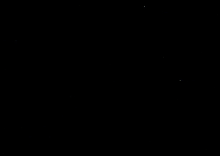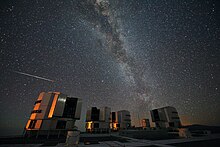Perseids
The Perseids, popularly known as the Tears of Saint Lawrence, are a prolific annual meteor shower during the months of July and August.
History
The Perseids are also known in countries with a Catholic tradition as tears of Saint Lawrence because their saints are celebrated on August 10. During the Middle Ages and the Renaissance, the Perseids took place on the night he was remembered, in such a way that they were associated with the tears that Saint Lawrence shed when being burned on a grill.
The oldest record of Perseid activity is from AD 36. C., from the Chinese historical annals where a meteor peak is cited on those dates. But it was not until 1835 when the Belgian astronomer Adolphe Quetelet shows that a meteor shower occurs cyclically in August, with its radiant in Perseus.
Features
Although we perceive them as shooting stars, they are particles of dust about the size of a grain of sand left behind by Comet Swift-Tuttle in its orbit around the sun. The light effect is produced when these grains pass through the terrestrial atmosphere, attracted by our planet, and volatilize. They do it at about 210,000 kilometers per hour.
Its period of activity is long and extends between July 16 and August 24. Its maximum is between August 11 and 13 with a zenithal hourly rate (THZ) 100, which makes it the third rain of the year (after the Quadrantids and the Geminids), although the Perseids are the most popular because they are visible. from the northern hemisphere during the summer.
Origin
Although they owe their name to the constellation Perseus, the truth is that they have little to do with it. Yes, because the parent body of the Perseids is the comet 109P/Swift-Tuttle. It was discovered by Lewis Swift and Horace Parnell Tuttle on July 19, 1862, it has a diameter of 26 kilometers and its orbit around the Sun has a period 135 years old.
Its last appearance took place in 1992, producing a peak of activity with THZ 300 in 1993. Since then the activity has decreased progressively to the normal level of today.
In 2009 there was a move towards a debris flow with a higher population density, so the THZ was 173.
Contenido relacionado
National parks of England and Wales
(39) Laetitia
(116) Sirona

